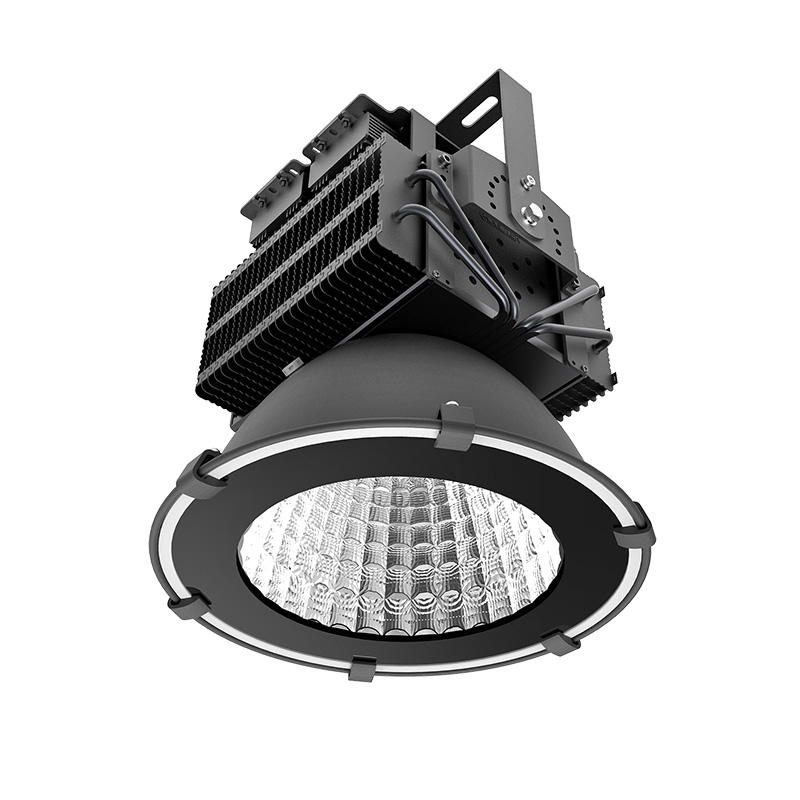How to choose the right LED Aquarium lights
Proper lighting plays a vital role in the health and well-being of aquatic life. It can not only enhance the beauty of the aquarium display but also provide the necessary light energy for the aquarium and support the growth of aquatic plants. There are many types of aquarium lights on the market, and LED aquarium lights are becoming more and more popular because of their advantages such as energy saving, long life, and ability to mimic natural light.
Know your aquarium's needs
Before diving into the world of LED aquarium lights, it is important to understand the specific needs of your aquarium. Please consider the following factors:
Size and depth
The size and depth of the aquarium will determine the intensity and coverage of the LED lights. Larger and deeper tanks require lights with higher output power to ensure adequate light penetration.
Optical Spectrum
Different aquatic plants and animals require specific spectra for their growth and development. Research the lighting needs of a particular species and select LED lights that provide the appropriate spectrum, including red, blue, and white light.
Lighting time
Consider how long the lights will be on each day. Some LED lights come with a controller so you can set a consistent lighting schedule that mimics nature's day-night cycle.
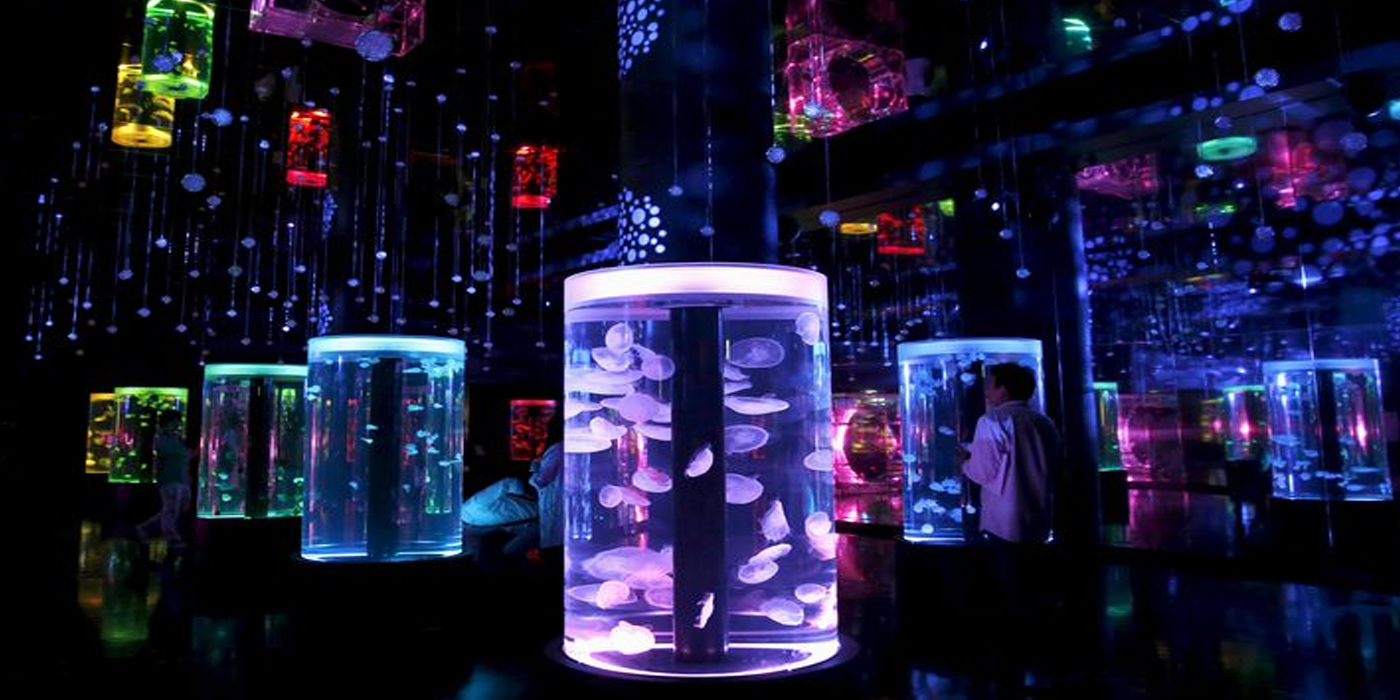
Types of LED Aquarium Lights
Full Spectrum LED Light
These lights provide a balanced spectrum including red, blue and white wavelengths. Suitable for both freshwater and saltwater aquariums, the full-spectrum LED light promotes healthy plant growth and enhances fish coloration.
Blue LED light
Blue LED lights mimic the natural lighting conditions of the ocean, making them ideal for saltwater aquariums. They promote coral growth and enhance the fluorescent colors of marine fish.
LED lights for plants
If you have an aquarium with plants, consider investing in plant-specific LED lights. These lights have a high-intensity red and blue spectrum that promotes photosynthesis and healthy growth of plants.
Adjustable LED lights
Some LED lights have adjustable settings that allow you to control the intensity and color spectrum. This flexibility is beneficial if you have a wide variety of plants and fish with varying light requirements.
Factors to consider when choosing LED aquarium lights
Spectrum
Spectrum refers to the range of colors emitted by LED lights. It is critical to choose lamps that provide the full spectrum, including red, blue, and green wavelengths. This ensures optimal growth of the plants and enhances the natural color of the fish.
Strength and adjustability
The intensity of the LED light determines the brightness of the aquarium. Look for lights with adjustable intensity levels so you can tailor the lighting to the needs of your fish and plants.
Durability and longevity
LED lights generally have a longer lifespan than other lighting options. . Look for durable lights with a high IP (Ingress Protection) rating that is dust and water-resistant. To ensure long-term use without frequent replacement.
Heat dissipation
LED lights generate heat, and excessive heat can damage the aquarium's ecosystem. Choose LED lights with efficient cooling mechanisms, and low heat output to prevent overheating and maintain a steady water temperature.
Installation options
Consider installation options for LED lights. Some lights can be easily mounted on the rim of an aquarium, while others may require additional accessories or hanging kits.
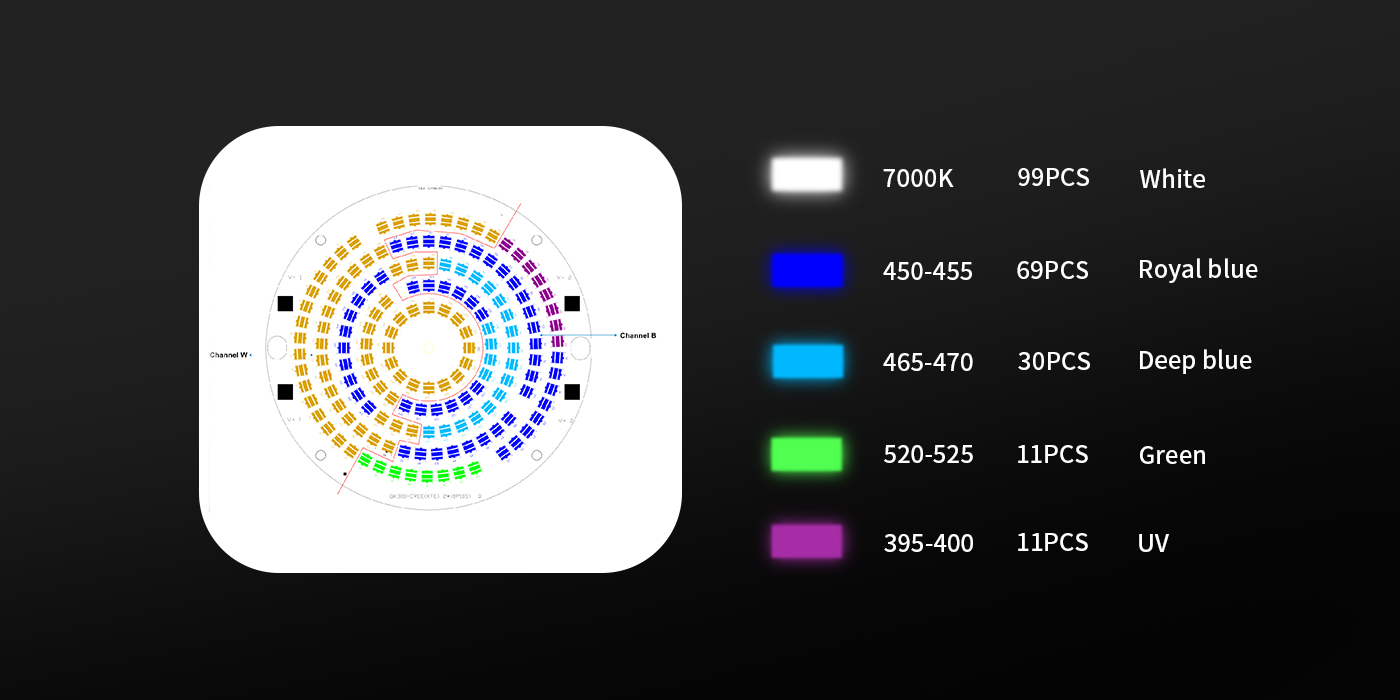
LED Aquarium Lights VS Other Types of Aquarium Lights
While LED aquarium lights have many advantages, it's also important to be aware of the alternatives on the market. Let's explore other types of aquarium lights and their characteristics:
fluorescent light
Fluorescent lighting has been a popular choice for aquarium lighting for many years. They're inexpensive and have decent lighting effects. However, fluorescent lights are less energy efficient and have a shorter lifespan than LEDs. Fluorescent lights also emit more heat, which affects the temperature of the aquarium.
Incandescent lights
Incandescent lamps are traditional filament lamps commonly found in household lighting. They are inexpensive, but not ideal for aquariums due to high heat generation, low energy efficiency, and limited color options. Incandescent lamps are gradually being phased out and replaced by more advanced lighting technologies.
Metal halide lights
Metal halide lamps are powerful and capable of simulating intense natural light. They are often used in large marine reef aquariums to support coral growth. However, metal halide lamps consume a lot of energy and generate a lot of heat. They also require an additional cooling system to maintain the temperature of the aquarium.
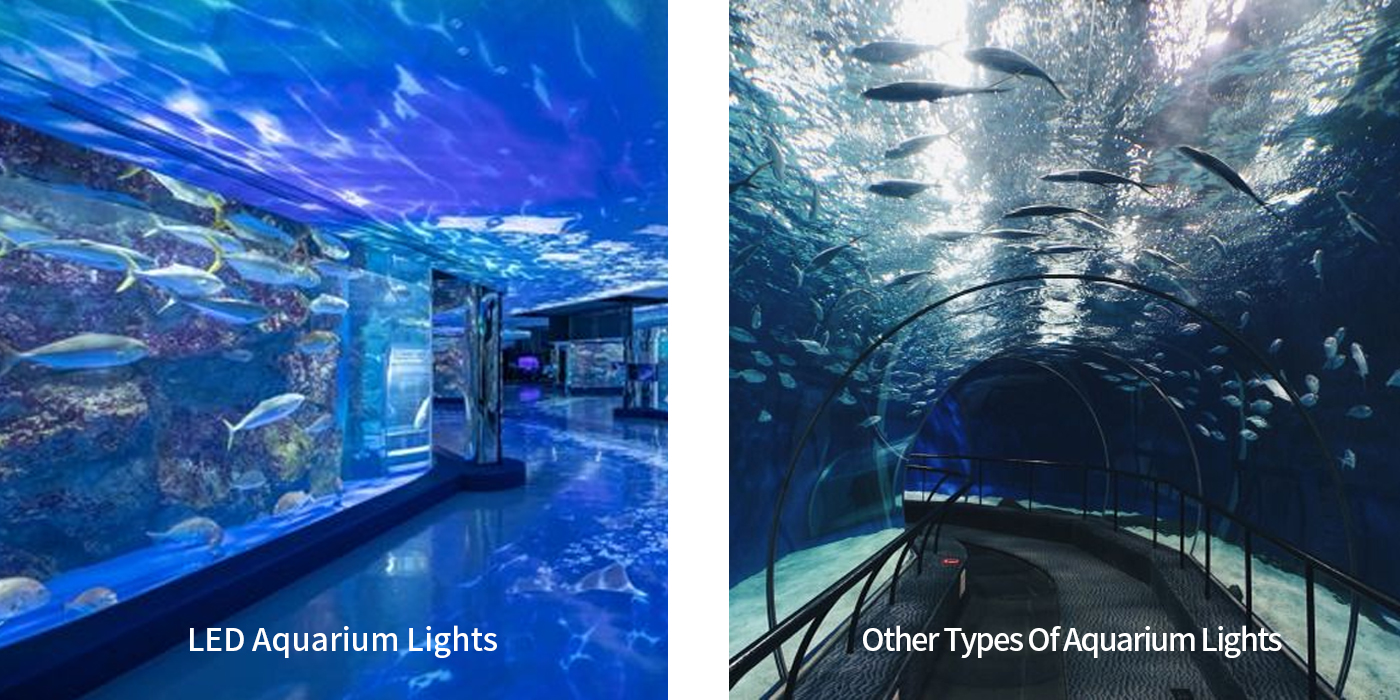
Application Scenarios of LED Aquarium Light
As any aquarium enthusiast knows, proper lighting is critical to the health and well-being of aquatic life. So what are the various application scenarios of LED aquarium lights? And how they can enhance the aesthetics and functionality of your aquarium.
- Freshwater Aquarium
LED aquarium lights are widely used in freshwater aquariums due to their versatility and ability to mimic natural lighting conditions. They provide the ideal spectrum for aquatic plant growth, boost photosynthesis, and create a vibrant and natural ecosystem. The LED light has adjustable color temperature and intensity settings, allowing enthusiasts to create different lighting effects, such as sunrise, sunset, and moonlight simulations.
- Saltwater Aquarium
LED lights are equally popular in saltwater aquariums because they provide a spectrum very similar to natural sunlight, ensuring the healthy growth and development of corals and other marine life. Specific wavelength LED lights enhance the coral's color for a stunning visual effect. In addition, LED lights are less prone to heat transfer, reducing the risk of overheating vulnerable marine ecosystems.
- Coral Reef Aquarium
For dedicated reef aquariums, LED lights are the first choice. They provide the intense light needed for photosynthesis and coral growth, while also providing control over the color spectrum to enhance the vividness of coral colonies. LED lights can simulate the natural movement of light in the ocean, creating mesmerizing underwater landscapes.
- Planted tank
Planted aquariums require specific lighting conditions to support the growth of aquatic plants. LED lights are perfect for this as they produce the correct light spectrum needed for photosynthesis. The LED lights are adjustable in intensity and color temperature to ensure optimal plant growth while providing an aesthetically pleasing display.
- A fish tank with only fish
Aquariums that are primarily used to showcase different species of fish can also benefit from LED aquarium lights. Color temperature adjustable LED lights enhance the fish's natural colors, making them appear more vibrant and visually appealing. In addition, LED lights offer a more energy-efficient solution than traditional fluorescent or incandescent lights.
- Breeding pond
For breeding tanks, precise lighting conditions are critical to stimulating spawning and promoting the overall health of fish or other aquatic life. LED lights can be programmed to mimic the natural day-night cycle, which can trigger reproductive behavior in certain species. They also allow flexible adjustment of light intensity and spectrum to the specific requirements of the breeding process.
- Showcase
LED lights are widely used in commercial and public aquariums where the main goal is to create visually stunning displays. Capable of producing vibrant colors and customizable lighting effects, LED lights can turn a simple aquarium into a stunning exhibit. Whether it is a theme exhibition or a display of rare exotic species, LED lights can enhance the overall visual impact.
- Aquascaping Competition
Aquascaping competitions have become very popular in recent years, with contestants showcasing their creativity in designing fascinating underwater landscapes. LED lights play a vital role in these competitions as they allow competitors to create dramatic lighting effects, accentuate specific areas and enhance the overall aesthetic of the aquascape.
- Public aquariums and zoos
Public aquariums and zoos often have large aquatic exhibits and marine exhibits. LED lights are the preferred choice in these environments due to their energy efficiency, durability, and ability to create stunning visual effects. LED lights can be used to simulate different environments
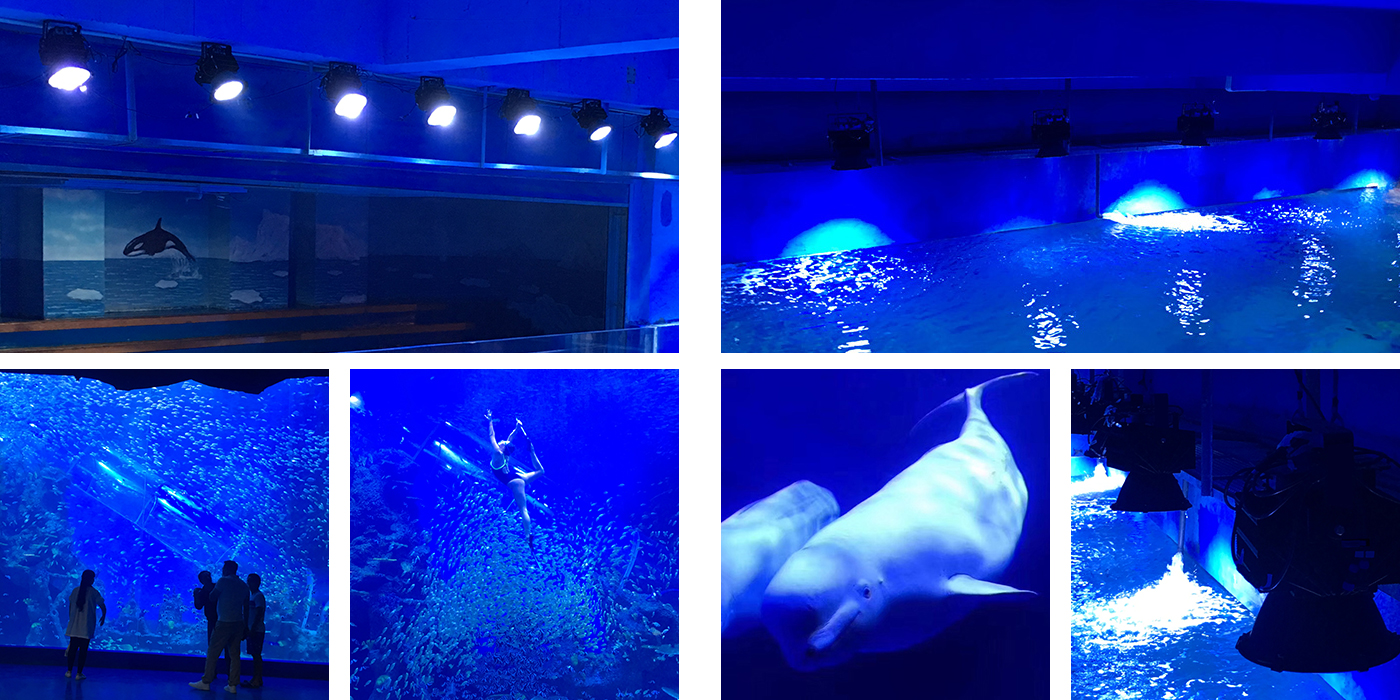
FAQ
Yes, LED aquarium lights are versatile and can be used in various types of aquariums, including freshwater tanks, saltwater tanks, and marine reef aquariums.
The duration of the LED light depends on the type of fish and plants in the aquarium. In general, it is recommended to provide 8-12 hours of light per day to simulate the natural day-night cycle.
Yes, LED lights with the proper color spectrum can support the healthy growth of plants in an aquarium. However, for best results, it is imperative to choose LED lights specifically designed for planted aquariums.
Yes, both the brightness and color intensity of the LED lights can be adjusted, allowing you to create different lighting effects in your aquarium, simulating natural light conditions.
The recommended duration for LED aquarium lights is usually 8 to 10 hours per day. However, it is important to research the specific lighting needs of your aquarium species, as some species may require shorter or longer light periods.
Yes, you can mix and match different types of LED lights to create a personalized lighting setup. This is especially beneficial if you have a wide variety of plants and fish with varying light requirements.
Submit Your Request
We’re always excited about your message, so feel free to get in touch, we will reply you within 2 hours.

